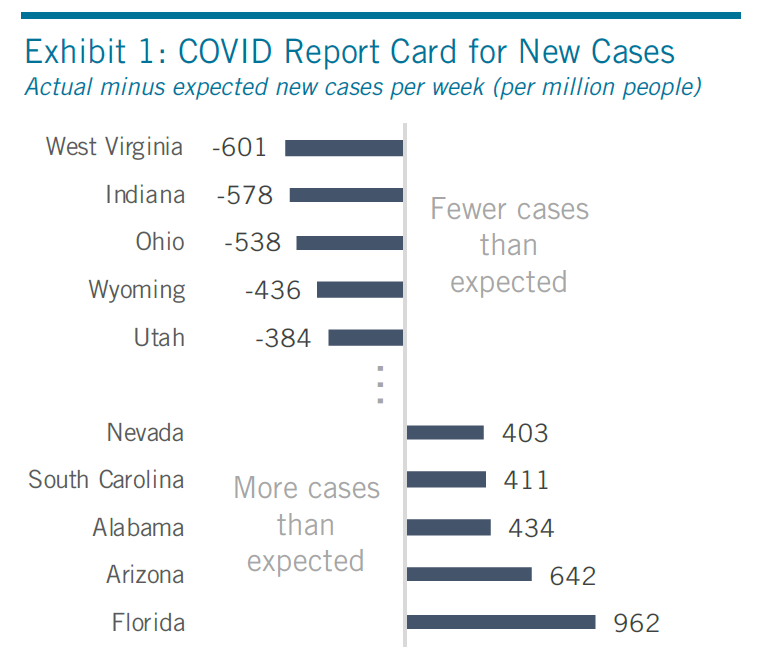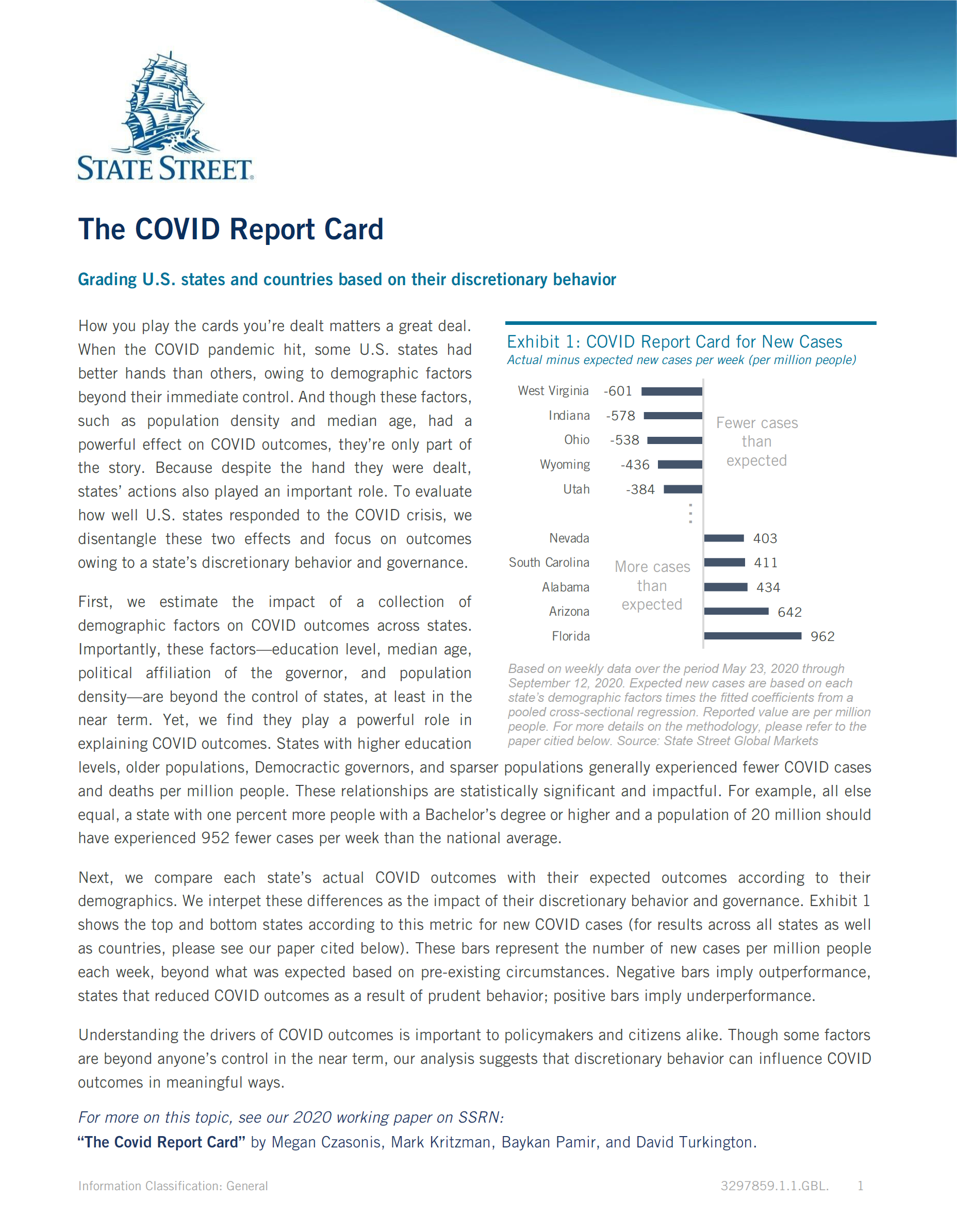By Megan Czasonis, Mark Kritzman, Baykan Pamir, and David Turkington.
We evaluate how well US states and countries responded to the COVID-19 crisis by attributing their outcomes to demographic circumstances outside of their control versus discretionary actions.
When the pandemic hit, some US states were better positioned than others, owing to demographic factors beyond their immediate control. These factors — education level, median age, political affiliation of the governor, and population density — had a powerful effect on COVID-19 outcomes across states. Nonetheless, they’re only part of the story, as states’ discretionary actions also played an important role. To evaluate how well US states responded to the crisis, we disentangle these two effects and focus on outcomes owing to a state’s discretionary behavior and governance. Understanding these drivers is important to policymakers and citizens alike. Though some factors are beyond anyone’s control in the near term, discretionary behavior can influence COVID outcomes in meaningful ways.
Get the summary here.


